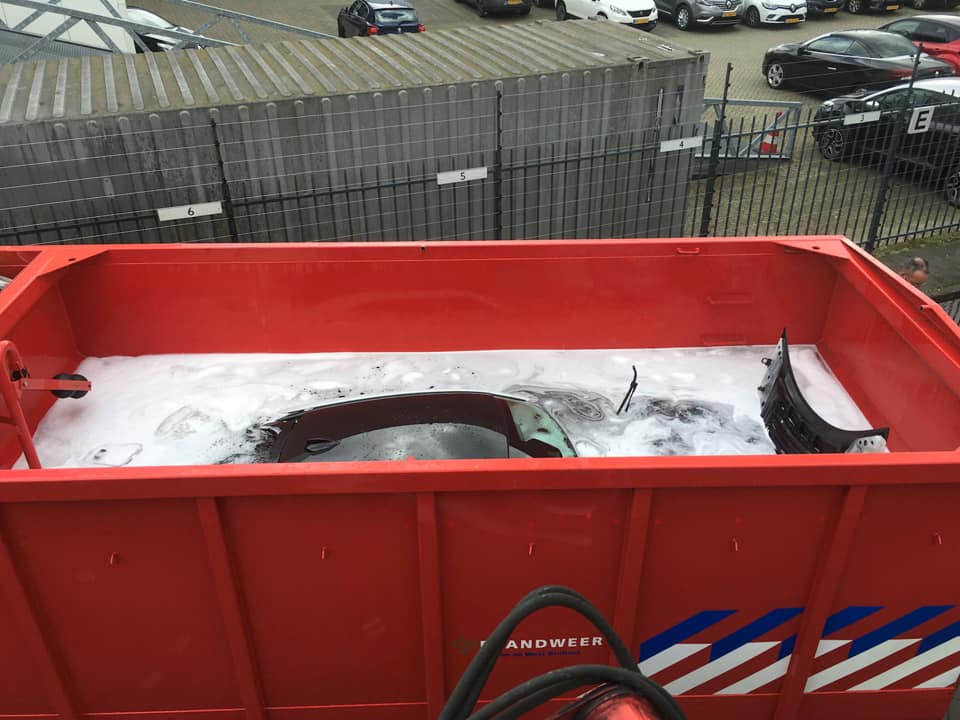
A report released on Wednesday by the National Transportation Safety Board (NTSB) states that emergency responders have access to inadequate tools and training for fighting electric vehicle fires that occur. The NTSB arrived at this conclusion after investigating four separate EV fires involving lithium-ion batteries.
When EVs are involved in high-speed crashes, similar to one that took place in 2016, the lithium-ion cells can cause a substantial fire risk if damaged. Unfortunately, the NTSB states that even most Emergency Response Guides (ERG) from EV manufacturers themselves lack clear and precise information on fighting those fires. So the NTSB created a series of recommendations to address the issue.
The most notable of these recommendations is to standardize automaker ERGs and model them on the International Standards Organization standard 17840 and SAE International recommended practice J2990. The NTSB even suggested that a vehicle with one of these updated guides could achieve an increased overall safety rating.
Another recommendation included in the NTSB’s report was more research into ways to de-energize energy in high-voltage lithium-ion batteries after a crash. Currently, the biggest issue with this idea is the complex differences from one EV to another, creating a need for emergency responders to possess large amounts of knowledge for every specific vehicle.

According to the US Fire Administration (USFA), an average of 171,500 highway vehicle fires occurred within the US between 2014 and 2016. While EVs likely accounted for less than 1% of those fires, they do still happen, and chemical fires don’t burn the same as non-chemical fires. Due to this, chemical fire education is essential for emergency responders going forward.
Some practical solutions to EV fires have already begun appearing around the world. One example comes out of Copenhagen and is essentially a specially designed container that a car can be hoisted into when on fire. Once inside the container, nozzles fill the container with water and the vehicle is kept submerged for a prolonged period of time. This solution mitigates all of the hazardous aspects of chemical fires caused by EVs.
It’s important to note that the NTSB can’t actually make any changes or rules; they can only make recommendations. Despite that, the suggestions that the new report details should be seriously considered by everyone, including auto manufacturers. Battery fires can pose a serious danger, especially when the people designated to put them out aren’t educated on how to do so.
Via NTSB (National Transportation Safety Board)
Subscribe to Electrek on YouTube for exclusive videos and subscribe to the podcast.
Author: Nicholas Terry
Source: Electrek






